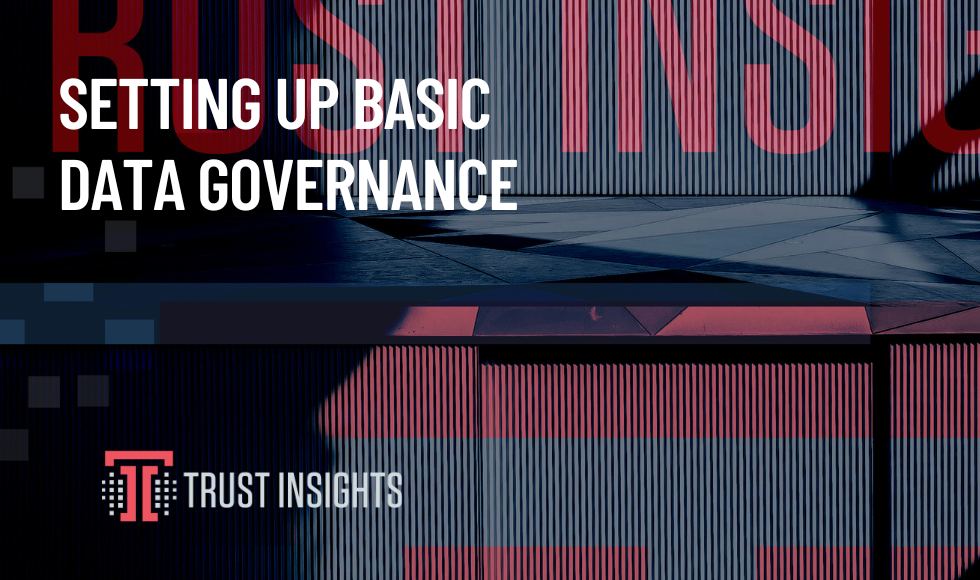Whenever I start to say “governance” to one of my clients I can see the involuntary shudder start to happen. It’s a word that people tend to dread. It has a lot of negative connotations such as slow-moving, daunting, lots of paperwork, overhead, delays, extra work, extra cost, and endless meetings. The list of reasons not to do it goes on and on.
True, data governance can mean all those things if not approached thoughtfully. Not all data governance plans are the same and there is no “one size fits all”. Every company will have different needs. Conversely, having strong data governance can speed up your processes, make you agile, and allow you to quickly answer questions. So let’s get into the good parts of data governance, shall we?
Governance, in this context, is just another way of getting organized. I love organizing. It gives me a sense of accomplishment. I can find things easily, and direct others to items even if I’m not looking at them. A good example of this is folder governance. Even though we’re a small company, the folders that we have in our online system can get unwieldy, making it hard to find a contract or a deliverable. By setting up governance for which folders should exist and what materials belong in each, we have a better chance of finding what we need without too much effort.
It took me a long time to get an organized mindset, and I fail at it some days. When I was a teenager I was the walking definition of chaotic. I never knew where anything was, my homework was forever incomplete, and I was late for everything. As I got older I started to see the consequences of this and would take small steps to get more organized. Again, it wasn’t overnight, and not everything I tried worked.
When I think about all the projects I want to tackle around my house it can feel overwhelming. To feel like I’m making headway, I try to start with one project that isn’t overly time-consuming and that I know I can complete. This is how I recommend you start thinking about your data governance. Not all at once, but in manageable pieces.
When we talk about data governance we’re talking about a few basic things: What is it? Who owns it? and How is it managed? You can go much deeper with your governance but for most marketing organizations that is a good enough start.
Start with one piece, like ownership and access and document that. The questions you want to answer are:
- Who owns the software or database that collects the data?
- Who can access the data that is collected in the software or database?
- What levels of access does each person have (read-only, editor, admin)?
- Do all the people who have access have the correct level of access?
- Are there people who should be removed from having access?
- When was the last time passwords were changed?
Depending on the size of your organization, this could be a small or large list of people. If you work with outside agencies, the list may get even longer. However, don’t let that deter you. Most software has a user portal built in that will tell you this information. You may also need to ask around to other team members to confirm. Knowing who can access and edit your data is a good first step.
Once you know who, you need to know what. Meaning, what data is being collected. This will vary depending on the system or database you have set up. A system like Google Analytics will collect data about the actions happening on your website, whereas a CRM system will collect data about your customers themselves. If you’re using more than one system in your tech stack (and most of us are) you can start with a simple spreadsheet that lists the basic data points from each system. It might look something like this:
System – data collected
Google Analytics – website visits, pages visited, forms filled
Hubspot – contact name, contact email, contact company
This is oversimplified but you get the idea. The goal is to have an understanding of what data lives in what systems.
Lastly, you want to answer the question of how. How is this data managed? A lot of systems will have you believe that they are “set-it-and-forget-it” but that is simply not the case. You should, at a minimum, review the setup of your system annually. As your business goals change, the data that you collect to support those goals will also change. As your teams change, who has access will change. This is a great time to update your governance documents.
Data governance doesn’t need to be an arduous effort of endless meetings that don’t result in anything. It should be an activity that allows you to get to what you need because you know where everything is and who to ask.
Have questions about how to get your data governance project started? Come find me in our Free Slack Group, Analytics for Marketers
|
Need help with your marketing AI and analytics? |
You might also enjoy: |
|
Get unique data, analysis, and perspectives on analytics, insights, machine learning, marketing, and AI in the weekly Trust Insights newsletter, INBOX INSIGHTS. Subscribe now for free; new issues every Wednesday! |
Want to learn more about data, analytics, and insights? Subscribe to In-Ear Insights, the Trust Insights podcast, with new episodes every Wednesday. |






